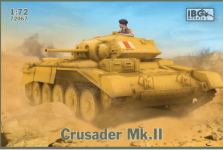Roden 337 Convair B-36D/F/H/J Peacemaker 1/144
Plastikowy model samolotu bombowego do sklejania. Zestaw modelarski nie zawiera kleju ani farb.
In 1946, one of the most massive aircraft in the history of aviation came into being, the Convair B-36 Peacemaker strategic heavy bomber. For the next 10 years it became the principal weapon threatening retaliation in the event of a new world conflict, startling the imagination even today with its extremely large size. This was the instrument which was to deliver the deadly nuclear weapon as deep as possible into the territory of a potential adversary, which for the United States, soon after the end of World War II, meant the Soviet Union.
As early as 1947, after testing, series production of the B-36A and B-36B versions began, which started their military service in 1949.
Even for such a powerful country as the United States, building such a technologically complex aircraft as the B-36 was a difficult and very costly task. In 1948, the question of terminating the B-36 program was raised, but the sharp deterioration of the political situation due to the conflict in West Berlin forced politicians to heed the military’s advice and continue the program after 75 of the A and B versions had already been built.
The main limitation of the B-36B was its relatively low speed. The quickest way to solve this problem was to install additional engines, beyond the six that were already available. At the same time, the Boeing B-47 jet bomber was already being tested, which was fitted with the latest General Electric J-47 engines with a thrust of 2,720 kgf.
The result was an aircraft that has no analogue in aircraft construction today - the B-36D with ten engines; six pistons and four jets. As there was no time for long-term development, the B-36 was simply and quickly reconfigured as a dual-engine design with the J-47, even using a Boeing wing pylon. On the first flight, AN/APG-32A radarsignificant vibration of this structure was detected due to the influence of reciprocating engines, and therefore the pylon had to be strengthened with a strut - an archaic feature such as had provided structural rigidity to biplanes during the First World War.
Since it was decided that jet engines would be used only during takeoff and when gaining speed in a combat situation, it was necessary to design special cone-shaped louvers that closed the air intakes of engines in other flight modes.
The first flight of the modernized aircraft took place on March 26, 1949, and its characteristics were more than satisfactory, which allowed the military to request funding not only for the conversion of the B-36B to the new standard, but also additional construction of a new series of aircraft. A total of 64 B-36B aircraft were converted and another 22 completely new B-36Ds were built. The overall dimensions of the giant remained unchanged, but flight speed was increased by almost 100 km/h; although some characteristics, such as combat radius, deteriorated slightly due to the increase in aircraft weight and increased drag of the new design.
In 1950, a further improved modification of the B-36 appeared, the B-36F, with more powerful J-47GE-19 engines, the latest K-3A radar bombing system and the new AN/APG-32A radar. A total of 34 machines of this version were built.
In 1952, after making a number of changes to the design, the B-36H took to the air. It had even more advanced engines and radar equipment and 84 were built.
The advent of increasingly high-speed interceptor fighters forced the issue of agility of the bomber to be addressed. To this end, a weight loss program was adopted, according to which all protective weapons were removed except for the tail guns. This allowed the B-36H to reach a speed of 671 km/h, the best figure for any of these giants. The plane could carry 8 tons of bombs over a distance of 5,200 km, which was more than the capability of any other military at the time.
The final B-36 variant was the B-36J, of which 33 were built, appearing in July 1953. The main difference from the previous model was the additional fuel tanks in the outer wing sections, which permitted an increase of combat radius to 6,420 kilometers.
In the early 1950s, it was already clear that the era of the dominance of jet aircraft was imminent. The US military command ordered a new jet bomber, and soon the epoch-making Boeing B-52 took to the air, forever pushing all other developments, including Convair’s competing B-60, into the background. With its advent, the role of the B-36 as the maintainer of peace in the air gradually diminished, and in 1959 all B-36s were retired from US strategic aviation.
However, ten years of active combat patrols along the borders of the Soviet Union were undoubtedly one of the main factors in maintaining control over the tense situation in the world during the Cold War, which was gaining momentum year by year.












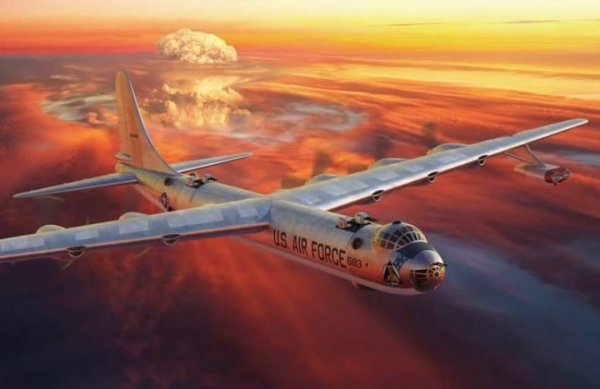
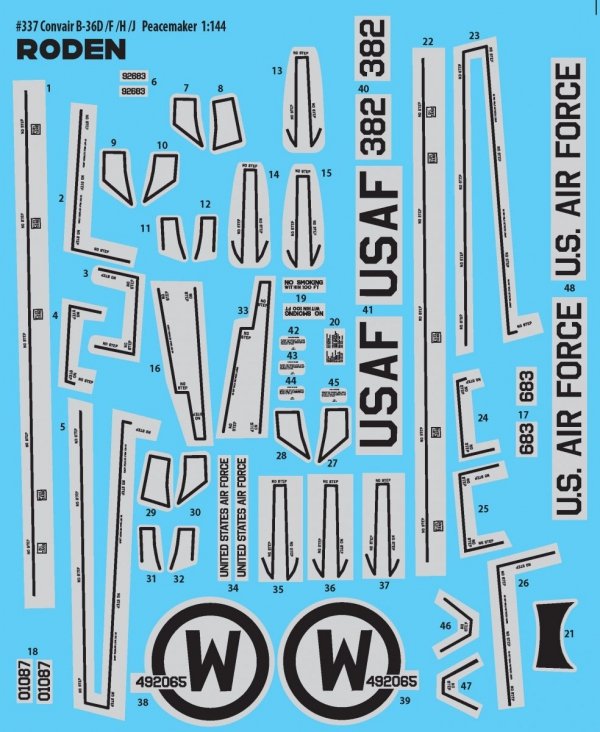
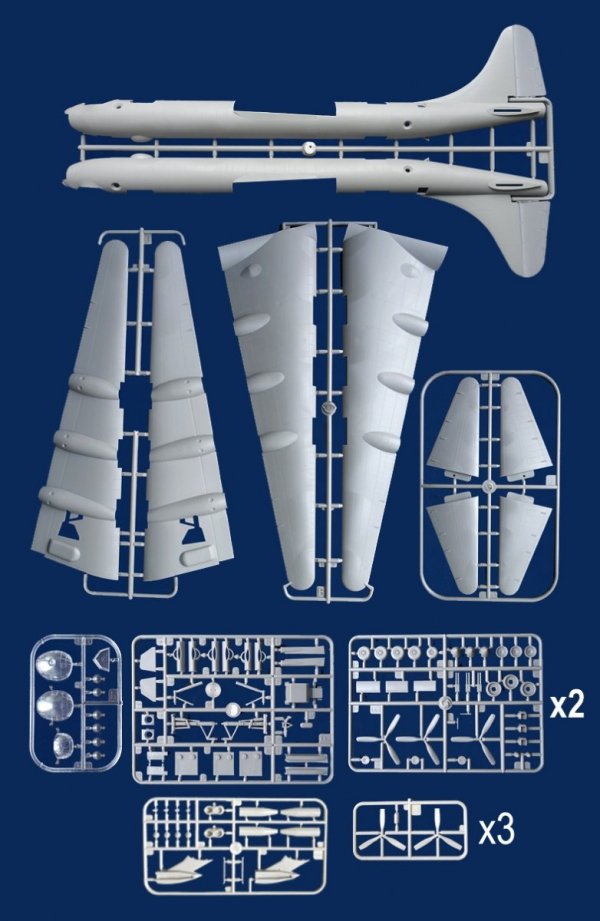

 1 szt.
1 szt.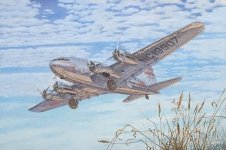
 2 szt.
2 szt.
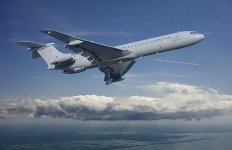
 3 szt.
3 szt.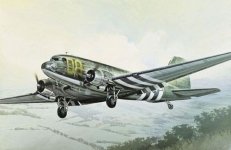


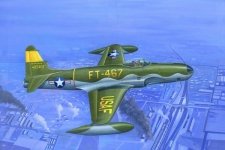
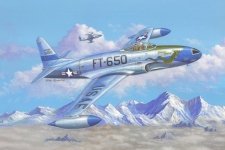

 232 szt.
232 szt.
